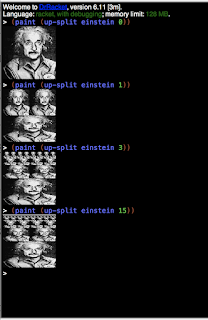SICP Exercise 2.45 split

Exercise 2.45. Right-split and up-split can be expressed as instances of a general splitting operation. Define a procedure split with the property that evaluating (define right-split (split beside below)) (define up-split (split below beside)) produces procedures right-split and up-split with the same behaviors as the ones already defined. SOLUTION The code and tests are here . ; Test Results in the image(s) below
